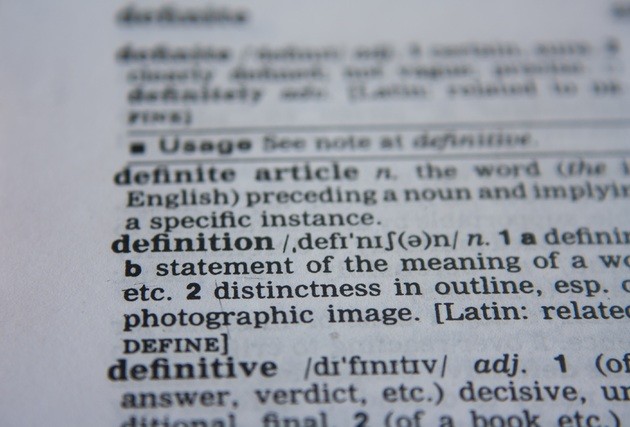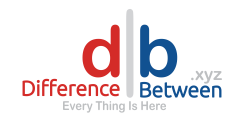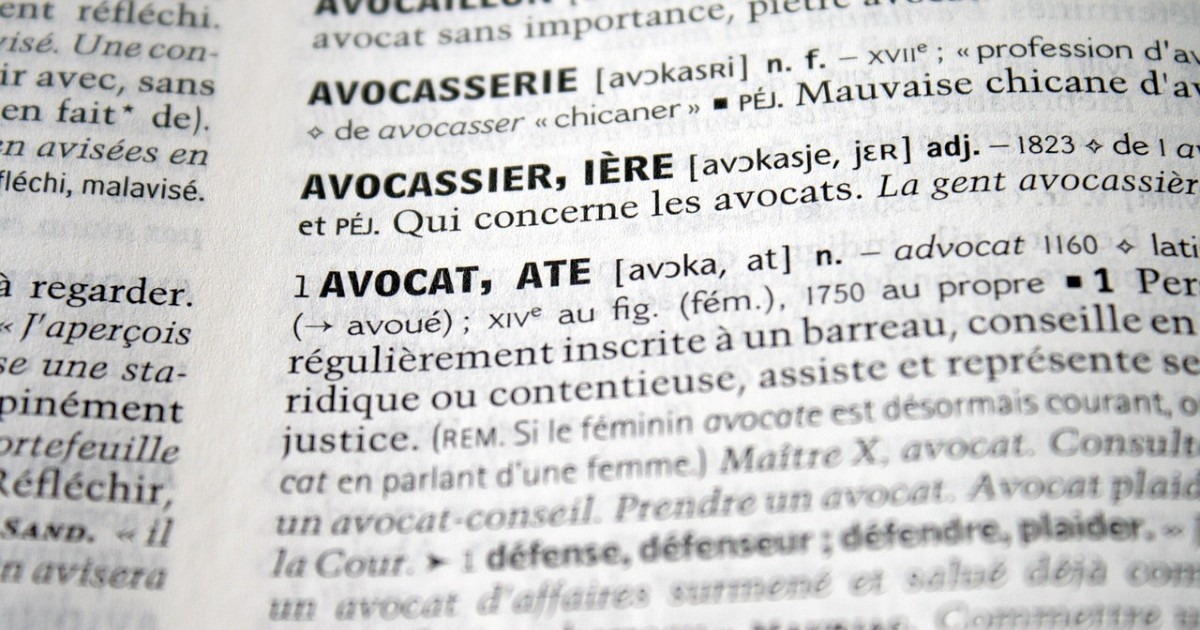A concept is a general idea that we have about something, formed by noticing the characteristics that various objects or situations have in common. It is an intellectual construct that allows us to organize and categorize reality.
A definition is the exact way of explaining what a word or concept means, clearly stating what its main characteristics are. Its purpose is to describe clearlyto facilitate understanding and proper use.
|
Concept |
Definition |
|
|---|---|---|
|
Definition |
A concept is a mental representation that is constructed from the categorization of common qualities that are abstracted from objects. |
Definition is the result of the process by which the meaning of something is specified or the description of the characteristics of a lexical unit is made. |
|
Features |
|
|
|
Ranking |
|
May be lexical, intensional, extensional, ostensive, stipulative, etc. |
| Example | Dog: a faithful four-legged animal. | Dog: a domesticated quadrupedal mammal belonging to the canid family. |
What is a concept

One concept is the representation or mental image which is formed after abstracting and generalizing the qualities that objects and phenomena possess in common.
This process of abstraction and generalization makes it possible to categorize objectsthanks to their common qualities. Concept formation helps in the development of knowledge of the world in human beings.
The word concept comes from the Latin concipereand means ‘to take into’ and ‘to hold’, as well as the action of ‘conceiving’ (that which is conceived after an action is performed, so that a concept is something that is constituted and born in the mind).
A concept is considered to be referential. This means that one always has a concept of something, whether it is concrete, such as a person or material object, or abstract, such as an emotion.
Characteristics of a concept
- It is formed by abstraction and generalization of the qualities of objects.
- There is a material or immaterial referent (object) from which qualities are abstracted.
- They have an important role in the learning process, since they allow us to know the world.
- It has an extension (the objects that are part of it) and an understanding (qualities or characteristics that the concept possesses).
- Concept formation is a human ability.
- It is dynamic, it changes with experience and understanding of reality.
Nature of concepts
Concepts have been understood as abstractions that are made after experiencing an object (a posteriori), or of taking common qualities of an idea, and observing this quality in other objects.
For example, a “city” has common qualities found in places such as “Madrid”, “Guadalajara” or “Los Angeles”.
Likewise, they have been understood as abstractions that are born in the mind without the need for experience (a priori). For example, according to Immanuel Kant (1724-1804), there are concepts or categories of the understanding that are found in the mind and that allow the world to be known.
Another way of understanding concepts has been to associate them with definitions, as prototypes of a category, or as the real ideas and essences of objects, among other things.
Properties of a concept
A property of a concept is its extensionwhich is composed of all objects that possess the characteristics to which a concept refers. For example, the concept “dog” extends to all existing breeds of dogs.
Another property that a concept possesses is its understandingwhich is composed of the necessary and specific characteristics that a concept possesses. For example, the concept of “dog” implies that it possesses qualities such as being “an animal”, “a quadruped”, “a living being”, “being faithful”, etc.
Formation of a concept
There are debates and different perspectives on how a concept is formed. However, a general and simple way to understand its formation is through the learning process:
- A concrete reality is perceived (observing that an orange is round);
- An abstraction is made of those similar qualities or attributes that are experienced in particular objects (the roundness and color of the orange);
- Objects that possess the same qualities are categorized (other oranges have the quality of being round and possess a similar color);
- Common qualities that the categorized objects exhibit are generalized (consider that oranges are round and have a similar color).
In this case, a concept is constituted when one starts from a perception and makes an abstraction of those qualities or attributes that are experienced in particular objects. Then the objects possessing the same qualities are categorized. Finally, the qualities are generalized to other objects belonging to this category.
Being able to establish differentiated groups of objects implies that human beings have the ability to reason, identify and differentiate between the qualities that objects possess.
Concept formation and human beings
Concepts are the result of the contact that human beings have with the world (material or immaterial). Through the senses, information is obtained about what reality is like and its attributes. The mind processes this information and categorizes it. In the case of animals, some may show some capacity to form concepts, but very little developed.
The main way people express and share the concepts they have learned is through language. Concepts are generally expressed with words (lexical units); however, words are not the concepts they express.
For example, when thinking about the quality of being “faithful” that dogs have with their owners, the degree of validity of this concept is related to what is observed during interaction with the animal in concrete reality.
On the other hand, one can also have the concept of something in one’s mind, without having words to express it.
Furthermore, if abstract ideas such as “goodness” are thought of, it is because different behaviors that are experienced (observed in people) then become associated, shaping that concept.
Concepts and learning
Concepts are important for obtaining knowledge and also play a key role in the learning process. This is because they allow us to develop memory, build reasoning to make decisions, and the very act of being able to generalize (infer), among other things.
In the same way, during the learning process, the ability to establish categories is constantly put to the test.
Like knowledge, concepts are dynamic. The known reality is transformed and with it the accumulated experience and acquired information is also transformed. Concepts themselves are capable of changing other concepts to which they are related.
What is a definition

The definition is the result of the process by which the meaning of a lexical unit is specified. (word, phrase or concept), and its characteristics are accurately described. It aims to clarify and differentiate the particular characteristics of an object, be it concrete or abstract, material or immaterial.
The word definition comes from the Latin definitionemwhich means ‘prescription’, ‘limit’, ‘explanation’, and which, in turn, comes from the term definirewhich means ‘to limit’ and ‘to explain’. That is, with the definition one delimits and specifies something.
Characteristics of a definition
- Specifies the meaning of a lexical unit.
- It is concise and brief.
- It is objective.
- The word to be defined is not repeated in the definition.
- It is not defined from negatives.
- Consists of a definiendum (word or term to be defined) and a definiens (defining part of the word or term).
- It can be lexical (as in the dictionary), intensional (specifies characteristics of what it defines), extensional (lists objects that fall under the definition), ostensive (defining using examples), etc.
Parts of a definition
The lexical unit to be defined is known as. definiendumwhile that which defines it is known as the definiens.
For example, if one considers the definition “a pet is a companion animal,” the word “pet” is the. definiendumwhereas the phrase “companion animal” is the definiens.
Rules of a definition
In specifying a meaning, the intent is to. to clarify it. The objective is to keep the definition simple, so focus only on what you are defining and its characteristics.
Also, since a definition is used to specify what something means, or to give a description, it should be concise, brief and as objective as possible..
By defining, the same lexical unit is not used.. For example, it is incorrect to say that “a father is any male or male who is the father of his children”.
Finally, a definition does not use negatives to define something. For example, saying that “a man is not a vegetable” does not clarify or specify what a “man” is.
Types of definition
There are different ways to organize or typify a definition. Some of these types are presented below.
Lexical definition
A lexical definition is the type of definition that. is found in dictionaries of those lexical units, such as words, phrases, terms, etc., that are used in natural language (the language that people use to communicate).
These are based on everyday language use, so they are used to specify the meaning of things. This implies that they are practical, descriptive and general, since their objective is to be understood by a large audience.
Intensional and extensional definition
A intensive definition refers to the specification of the necessary and sufficient characteristics or attributes that an object must possess to be part of a definition. This type of definition is one of the most common.
In this case, it is necessary that the characteristics are clear and have already been established in order to understand what they mean and to know which objects possess them.
A extensional definition refers to the extension that a concept or term possesses, in relation to all the objects that are defined by that concept or term. That is, it lists those objects that fall within the definition of a concept.
For example, a “collie”, a “cocker”, a “pitbull” and a “bulldog” are animal members of the “dog” group.
One difficulty with these types of definitions is that, in many cases, all members belonging to a concept or term cannot be enumerated.
Ostensive definition
An ostensive definition is basically one in which. examples are used to define something. That is, a referent is used as a support to give a definition. For example, to define “green”, an image of a leaf of a tree, a cucumber or an avocado is pointed to.
This type of definition is commonly used with children during their early learning period. It is also useful if the terms or concepts are abstract (colors, for example), and it is difficult to define them using a description, so using an example is easier.
Stipulative definition
A stipulative definition is used when. a meaning is applied to a word that is different from the one it already has (i.e., different from its lexical definition).
This type of definition is used in specific contexts, in which there is a kind of agreement among the people who use it.
For example, a stipulative definition is given when someone mentions in a political debate what is to be understood by “left to all those political parties that do not approve of free trade”.
This type of definition is connotative, since it refers to something particular to that context and is subjective.




